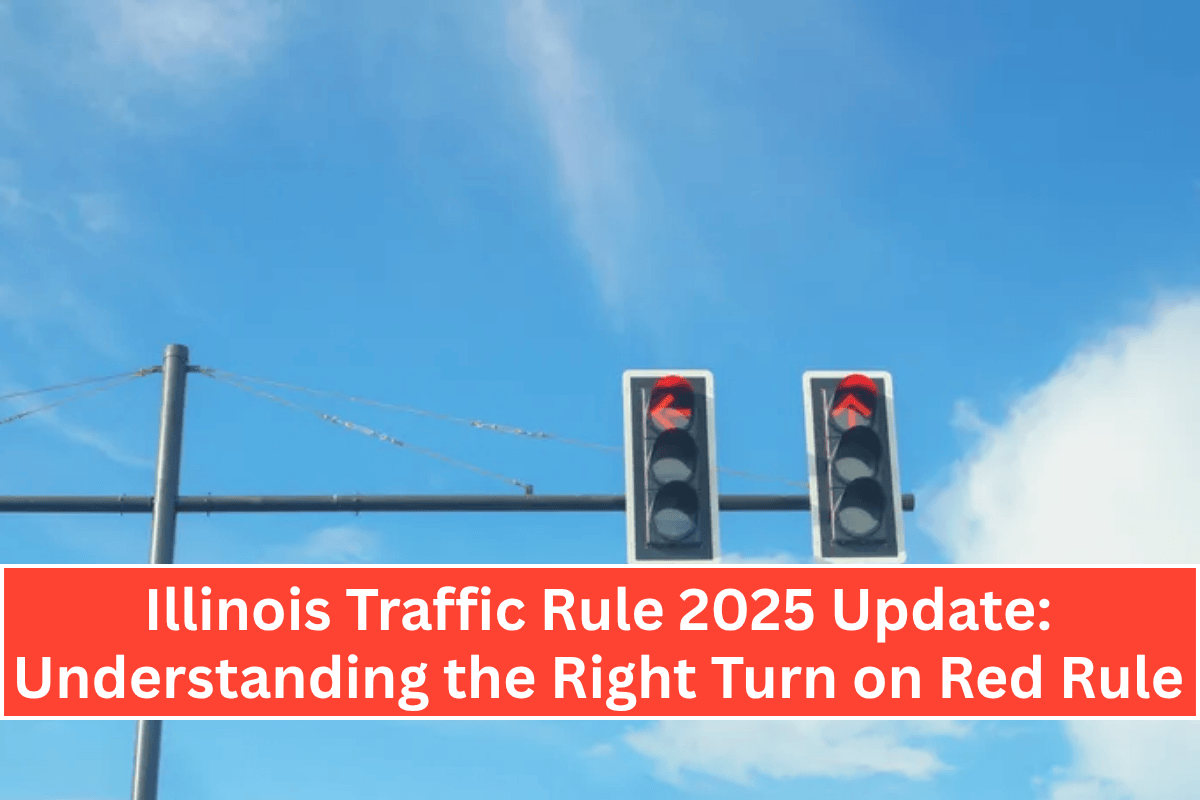In recent years, the right turn on red rule has been at the center of debates on traffic safety. This policy, which allows drivers to turn right at a red light after coming to a complete stop, has been a staple in U.S. traffic regulations for decades.
However, a rise in pedestrian and cyclist fatalities and injuries has sparked a reevaluation of the rule in many major cities, including in Illinois.
One notable incident that highlights the concerns surrounding this practice occurred in Chicago’s Lakeview neighborhood, where Sophee Langerman, a cyclist, was struck by a car making a right turn on red while she was walking her bike through the crosswalk.
Fortunately, Langerman was not seriously injured, but the bicycle required significant repairs. This incident has fueled the argument for banning right turns on red, particularly in areas with high foot and bicycle traffic.
The Case for Ending Right Turn on Red
The safety concerns over right turns on red have become more pronounced as pedestrian and cyclist deaths continue to rise. In 2022, more than 7,500 pedestrians were killed by automobiles, the highest number since 1981, according to a national report by the Governors Highway Safety Association.
Experts attribute the increase, in part, to larger vehicles like SUVs and pickup trucks, which have bigger blind spots and are more lethal in accidents.
Some cities have already begun to act on these safety concerns. For example, Washington, D.C. has approved a ban on right turns on red, effective in 2025, and Chicago Mayor Brandon Johnson has mentioned restricting right turns on red as part of his transition plan.
Similarly, San Francisco has urged its transportation agency to consider banning right turns on red across the city. Other cities such as Los Angeles, Seattle, and Denver have also explored such bans.
Advocates for the ban argue that drivers should not be able to decide for themselves when it’s safe to turn, especially in busy urban environments.
Safety advocates believe that banning right turns on red would make streets safer, reducing accidents involving pedestrians and cyclists who are at greater risk due to the blind spots and distracted driving that often accompany right turns on red.
The Opposition: Concerns About Efficiency
On the other side of the debate, critics argue that banning right turns on red would inconvenience drivers and slow down traffic, particularly for delivery services and public transportation.
The United Parcel Service (UPS) has long advised its drivers to avoid left turns, viewing them as inefficient, and the same concern extends to right turns on red. They believe that such bans would delay deliveries, increasing costs and reducing efficiency.
Jay Beeber, the executive director for policy at the National Motorists Association, argues that blanket bans on right turns on red will not necessarily make streets safer.
According to a study by his organization, even in California, right-turning drivers accounted for only a small number of pedestrian and bicyclist fatalities every few years. He contends that these bans are part of a broader agenda to reduce driving by making it more difficult and frustrating for motorists.
The Impact of Larger Vehicles on Pedestrian Safety
The debate also highlights the growing concerns over the safety of pedestrians and cyclists when large vehicles, such as SUVs and pickup trucks, are involved. Studies have shown that pedestrians are much more likely to be killed when struck by a larger vehicle.
The Insurance Institute for Highway Safety found that pedestrians had an 89% higher chance of being killed when struck by a pickup truck, and a 63% higher chance when struck by an SUV, compared to other vehicles.
These larger vehicles, with their larger blind spots and blunt front ends, are far more dangerous when making a right turn on red.
Former Seattle Mayor Mike McGinn, now the executive director of America Walks, a nonprofit advocating for pedestrian-friendly neighborhoods, explained that these vehicles “knock people down and run over them” rather than just bumping into them, making pedestrian fatalities far more severe.
The Evolution of Right Turn on Red
The right turn on red policy was introduced in the United States in the 1970s during the oil crisis, as a way to reduce idle times at stoplights and save fuel. However, experts like Bill Schultheiss, director of engineering at Toole Design Group, argue that the policy, while useful at the time, has long outlived its usefulness.
Schultheiss believes that the rule was oversold and that the negative consequences for pedestrians and cyclists are now becoming clear. He argues that the policy was a temporary measure based on a specific context (the gas crisis), and doesn’t account for the full scope of traffic safety issues we face today.
The Future of Right Turn on Red
As cities across the U.S. begin to explore changes to the right turn on red rule, Illinois has been at the forefront of these discussions.
While the state has not yet implemented a statewide ban, Chicago has seen increased conversations around restricting right turns on red in certain areas, particularly in neighborhoods with high pedestrian and cyclist traffic.
It’s clear that the issue will continue to generate debate, with safety advocates pushing for change and motorist groups voicing their concerns about the impact on traffic flow. The future of right turns on red in Illinois, and in other states, will likely depend on the balance between safety measures and the need for efficient transportation.
The right turn on red rule has been a longstanding feature of U.S. traffic law, but as the number of pedestrian and cyclist fatalities rises, cities across the country, including Chicago, are reconsidering the practice. While safety advocates push for bans, opponents argue that the rule is a crucial element of efficient driving.
As the debate continues, cities must find ways to ensure the safety of pedestrians and cyclists while still allowing for the smooth flow of traffic. Whether or not right turns on red will remain the norm in Illinois and other states is yet to be seen, but the ongoing discussions reflect a larger shift in how we approach traffic safety.












